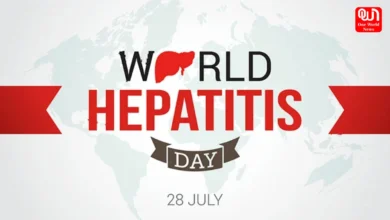The idea of erasing memories of childhood trauma completely is complex and not entirely feasible with current scientific understanding. Memories, particularly those associated with significant emotional experiences like childhood trauma, are deeply ingrained in the brain’s neural networks. However, individuals can work towards healing and managing the impact of traumatic memories through various therapeutic approaches and self-care habits. Here are five habits that can support healing from childhood trauma:
1. Therapy and Counseling
Seeking professional therapy or counseling is essential for processing and healing from childhood trauma. Therapists trained in trauma-focused therapies such as Cognitive Behavioral Therapy (CBT), Eye Movement Desensitization and Reprocessing (EMDR), or trauma-informed approaches can help individuals work through difficult memories and develop coping strategies. Therapy provides a safe space to explore feelings, address negative thought patterns, and gradually integrate traumatic experiences into a healthier narrative.
2. Mindfulness and Grounding Techniques
Practicing mindfulness and grounding techniques can help regulate emotions and manage distress associated with traumatic memories. Techniques like deep breathing, meditation, and body scans can promote relaxation and present-moment awareness. Grounding exercises, such as focusing on sensory experiences or repeating affirmations, can help individuals stay connected to the present and reduce the intensity of intrusive memories.
3. Establishing Healthy Boundaries
Setting and maintaining healthy boundaries in relationships is crucial for trauma survivors. Learning to prioritize personal needs, express feelings assertively, and recognize signs of toxic or unhealthy dynamics can foster a sense of safety and empowerment. Healthy boundaries create a supportive environment conducive to healing and self-discovery.
Read more: https://www.oneworldnews.com/lifestyle/guidance-for-parents/
4. Engaging in Self-Care Practices
Engaging in regular self-care activities can promote emotional well-being and resilience. This includes prioritizing adequate sleep, nutrition, and physical activity. Activities such as journaling, creative expression, spending time in nature, or pursuing hobbies can provide outlets for processing emotions and nurturing self-compassion.
5. Building Supportive Connections
Cultivating supportive relationships with trusted friends, family members, or support groups is vital for healing from childhood trauma. Connecting with others who validate experiences, offer empathy, and provide a sense of belonging can counteract feelings of isolation and shame. Building a strong support network encourages open communication and facilitates healing through shared experiences and mutual understanding.
Read more: Guidance for Parents: Teach Your Kids These Body Safety Guidelines
While it may not be possible to erase traumatic memories entirely, integrating these habits into daily life can empower individuals to heal, develop resilience, and reclaim agency over their narrative. Healing from childhood trauma is a journey that requires patience, self-compassion, and professional guidance. With time and dedicated effort, individuals can cultivate a sense of wholeness and move forward towards a healthier, more fulfilling life.
Like this post?
Register at One World News to never miss out on videos, celeb interviews, and best reads








